
Oct '11 - May '13
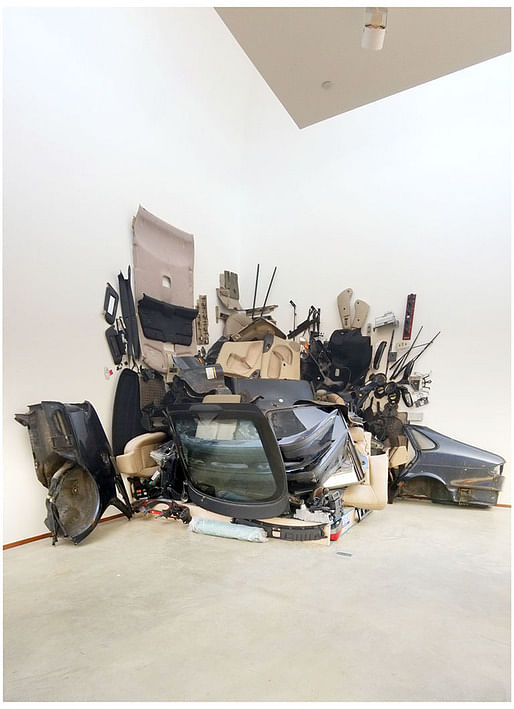
“I am not a thing—a noun. I seem to be a verb, an evolutionary process—an integral function of the universe.”—R. Buckminster Fuller (in ‘I Seem to be a Verb: Environment and Man's Future’, 1970)
Like my other projects done during my time in Cranbrook Academy of Art, Dept of Architecture, this project is deliberately self-explanatory. I let factors external of me to shape my work: irreparable car that would cost more to fix than to buy new, extremely late scholarship fund, our department studio that was first built as a garage, and numerous other factors. But in Hemingway's rule of simplicity in writing (in his use of verbs and nouns, constraining himself in using only minimal adjectives and adverbs to where they are only necessary) I found a strategy to not only eliminate the need to explain my personal decisions and idiosyncrasies, but also more importantly to open up various readings of the work as wide as possible.

It works. To date I have heard multiple rich interpretations, ranging from extremely positive remarks (somewhere in the line of “this is my favorite piece in the show”), curiosity (“what inspire you to do this (crazy) thing?”), profession-related specificity (“do you realize that SAAB is the car of choice for most architects?”), up to negative frustrations (the old plain “well, what can you say—it's art, right?”). I am admitting here that one reading that surprisingly stabbed me on the chest was the one made by a young visitor during the opening. “Your work channels a deep feeling in me, it reminds me of the recent incident in Boston”, he said while pointing to a certain detail, a specific moment in the piece. Then, he continued by asking me about my origin.

Coming from Indonesia, still the country with the biggest Moslem population in the world, and was born a Moslem myself, I am familiar with the violence often identified with the religion. Although I want to make clear that it was never my intention to make any identity-based work, neither have I any aim to make a bombastic direct political commentary on recent events, the moment I was forced to regard this reading, I was nothing but speechless. But having enough time to reflect on the issue to write this post, I can reply now that it is always useful to try to forget everything I know while I am working on something. Do not try to be funny. Do not try to be smart. Essentials never fail to show through. Remembering Bali and Jakarta bombings in the beginning of 2000's, it is clear that the acts of religion-based terrorism that devastated Indonesia the most to this day were indeed done using car bombs. I just had purged it from my memory, subconsciously, I guess.
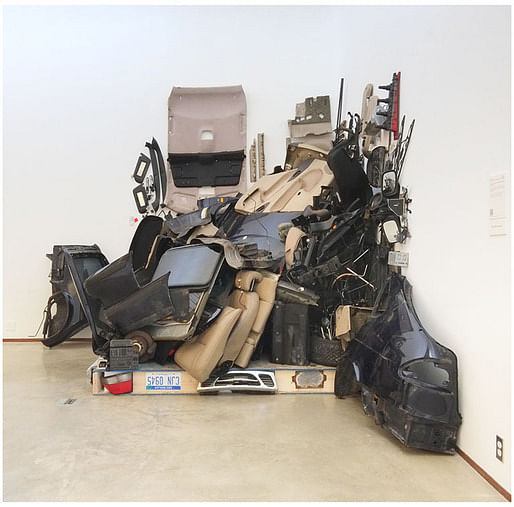
Alas, this notion of violence brings me to my fundamental motive for the project. Although it is really easy for me to answer any doubt on how the piece could be considered art (“It is the context. The fact that it is situated in an art museum, next to other one-off art/design pieces, makes it art. I am fully aware of this social contract, being a graduating student of an art school, and have been abusing this awareness to its fullest extent”, is my reply), the skepticism against considering it as an architectural piece requires more eloquent response from my part.
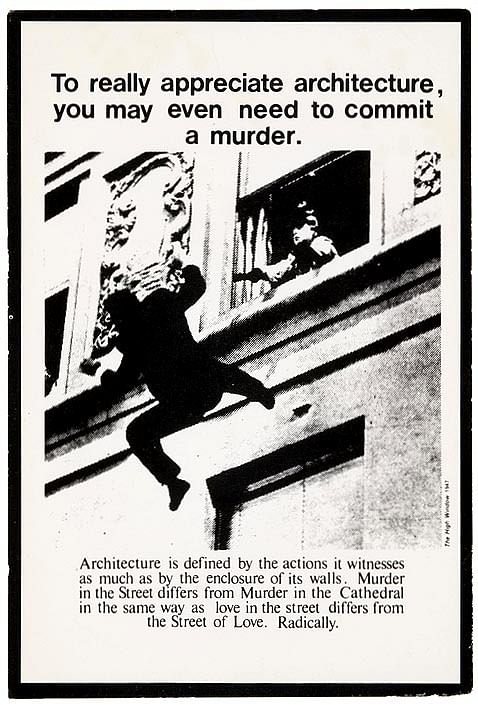
Poster, Bernard Tschumi, 1976, via Diary of Knowledge
The notion of architecture as an act of violence is nothing new. In the case of this project, it is double-folded. The first act of violence was done by me: forcing an object (a car) to a space never intended to house such program (museum). The second act was done through me: for the car to be able to enter the museum, applied forces were needed. I only came to the equation as an executor. As it was beyond my authority to apply those forces to the space, these concentrated forces were done exclusively to the object. It would be so much simpler and faster to cut the car into pieces, but I decided to take the laborious path by dismantling the car piece-by-piece, not only to avoid the machismo tendencies often related to cars and machineries, but also to question the understanding of utility and labor in our society. As every other violent acts, changes were brought to every party involved by the result. In this specific project case, the double-folded violence changes the victim (making the car not suitable to be called a car anymore in the end—but is it still a SAAB?), the cause (rendering, at least, a corner of the Wainger Gallery in the prestigious Cranbrook Art Museum to be no different than a corner of any junkyard in Detroit Metro area), and last but not least: the agent (myself). If every architecture is an act of violence, would double-folded violence end up creating double architecture—ultra-architecture? I think it is fair to say that even just the unfolding of this question could justify my consideration of this project to be the most architectural one I have ever done in my life, so far.
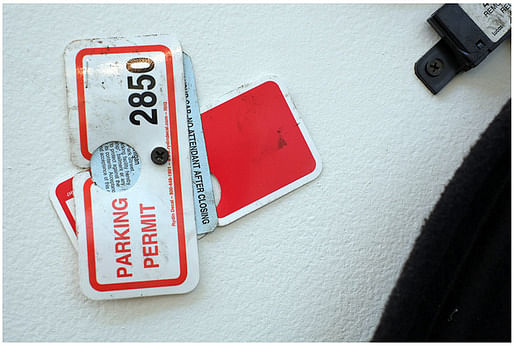
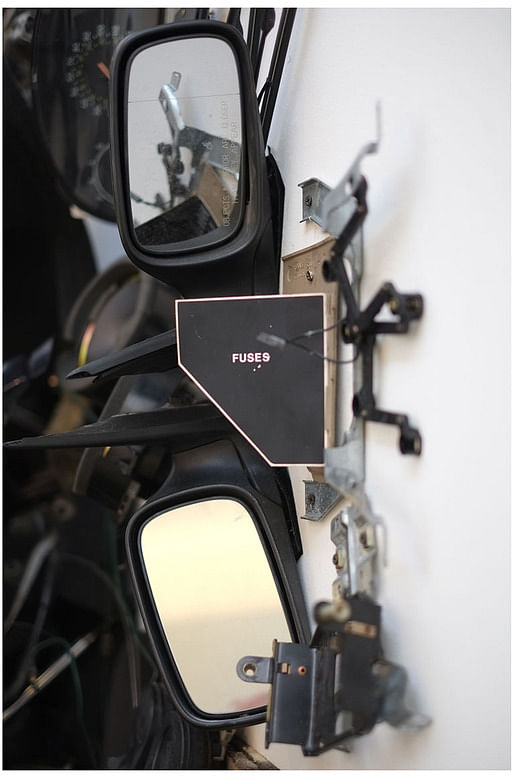
With that closing, I am saying goodbye to the school, and therefore also to this blog. It has been a really productive, albeit challenging two-years. I want to thank everyone who has written their comments, liked, retweeted, or +1-ed any posts that I have made in this blog. I am sorry that I have never been really active in replying comments, but please be assured that without them I would never do what I have done during my time in Cranbrook. I am a changed man.
For better or for worse? Unfortunately, the answer is beyond my knowledge—I would only let time do what it's supposed to do and hope that the answer might just emerge somehow. If only I would be so lucky.
Anyway, farewell.
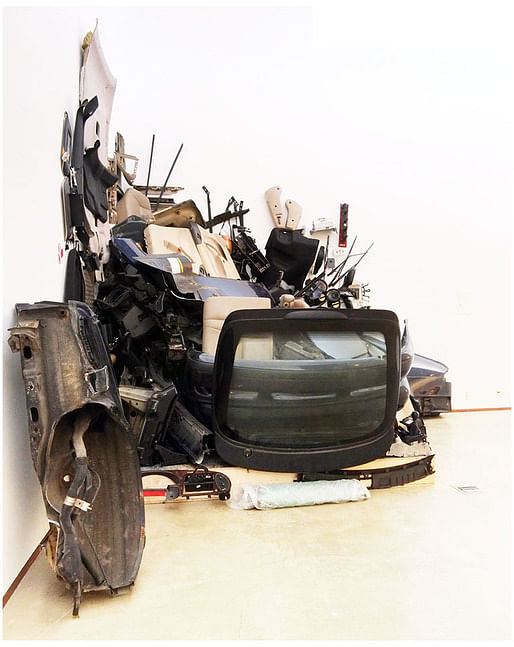
May 9, 2013 UPDATE:
I received this year's Academy Director's Award. According to the press release:
“Through digital fabrication and thinking, Rakun's work questions the role of individual authorship. The Director's award recognizes excellence throughout two years of study at the Academy.”
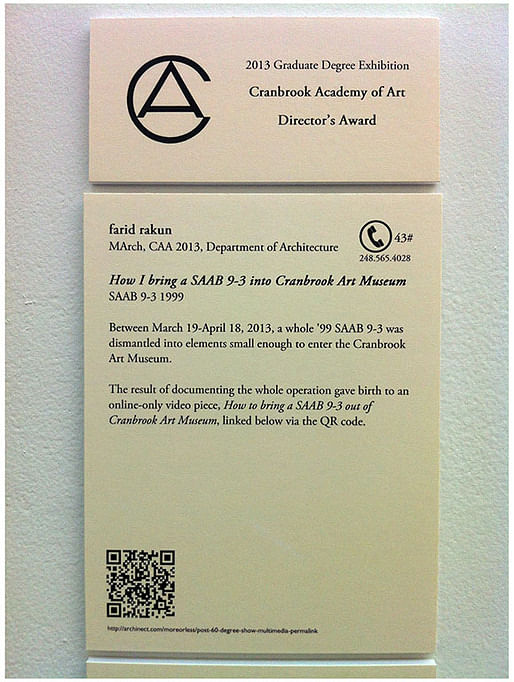
You agree? Please tell me.
A school blog on Arch Dept, Cranbrook Academy of Art. By farid rakun, admitted Fall 2011.
No Comments
Block this user
Are you sure you want to block this user and hide all related comments throughout the site?
Archinect
This is your first comment on Archinect. Your comment will be visible once approved.